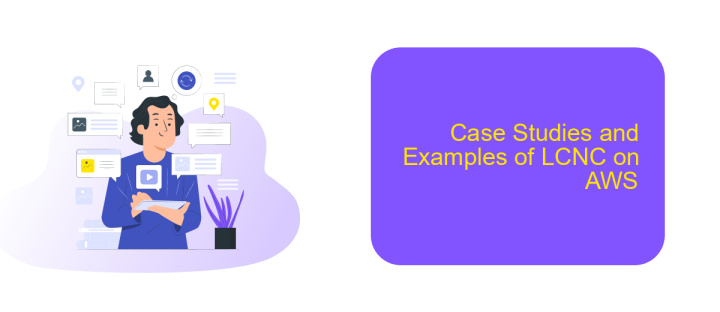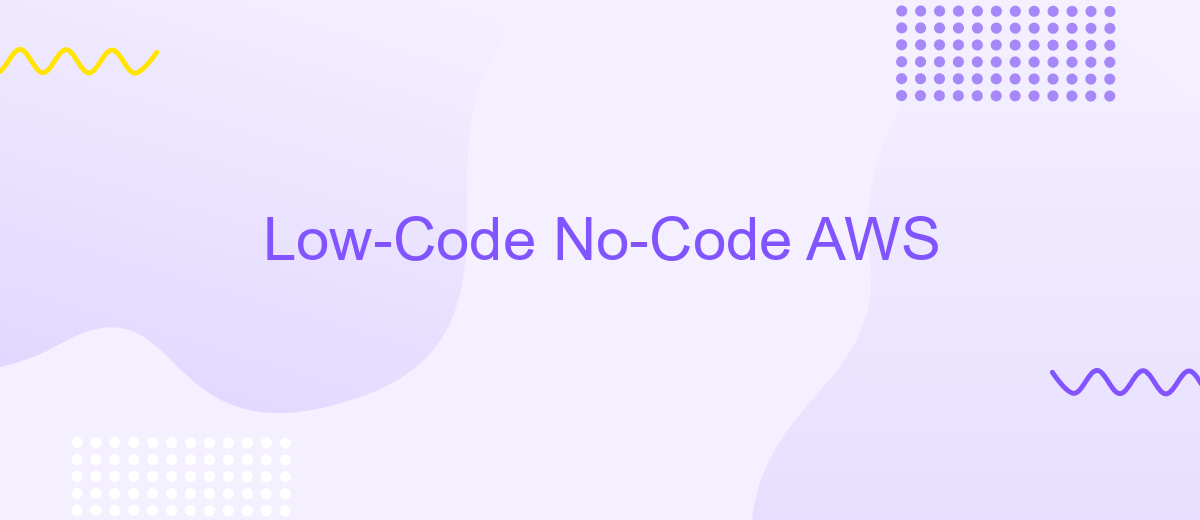Low-Code No-Code AWS
In the rapidly evolving landscape of software development, Low-Code and No-Code platforms have emerged as game-changers, enabling faster and more efficient application creation. Amazon Web Services (AWS) offers a robust suite of tools and services that empower developers and non-developers alike to build, deploy, and manage applications with minimal coding. This article explores how AWS is revolutionizing the Low-Code/No-Code paradigm.
Introduction to Low-Code No-Code (LCNC)
Low-Code No-Code (LCNC) platforms are revolutionizing the way businesses develop applications by minimizing the need for extensive coding knowledge. These platforms empower users to create, deploy, and manage applications with minimal manual coding, making technology accessible to a broader audience.
- Rapid application development
- Reduced development costs
- Enhanced collaboration between IT and business teams
- Improved agility and scalability
By leveraging LCNC platforms, organizations can quickly adapt to changing market demands and streamline their operations. Tools like ApiX-Drive further enhance this process by providing seamless integration capabilities, allowing businesses to connect various applications and automate workflows effortlessly. This integration capability ensures that businesses can maintain a cohesive and efficient system without the need for extensive custom coding.
Benefits of Using LCNC on AWS

Leveraging Low-Code No-Code (LCNC) platforms on AWS offers significant advantages for businesses looking to accelerate their digital transformation. One of the primary benefits is the rapid development and deployment of applications. With LCNC, even non-technical users can create and customize applications without deep coding knowledge, reducing the dependency on specialized developers. This democratizes the development process, allowing for quicker iterations and faster time-to-market. Furthermore, AWS provides a robust and scalable infrastructure that ensures these applications can handle varying workloads efficiently.
Another key benefit is the seamless integration capabilities offered by AWS, which can be further enhanced using tools like ApiX-Drive. ApiX-Drive simplifies the process of connecting various applications and services, enabling automated workflows and data synchronization. This integration capability is crucial for maintaining a cohesive ecosystem where data flows effortlessly between different platforms. By utilizing LCNC on AWS, businesses can achieve greater agility, reduce operational costs, and focus more on innovation rather than managing complex IT infrastructures.
AWS Services for LCNC Development

Amazon Web Services (AWS) offers a variety of tools and services that enable Low-Code No-Code (LCNC) development, empowering users to build and deploy applications with minimal coding effort. These services cater to different aspects of application development, including data management, integration, and user interface design.
- AWS Honeycode: A fully managed service that allows users to create powerful mobile and web applications without writing any code.
- AWS Lambda: Facilitates the execution of code in response to events, enabling serverless computing and reducing the need for infrastructure management.
- AWS Amplify: Provides a set of tools and services to build scalable mobile and web applications, including authentication, storage, and API integration.
- AWS AppFlow: Simplifies data integration between AWS services and third-party applications, making it easier to automate workflows and data transfers.
- ApiX-Drive: An integration service that helps connect various applications and automate data exchange, enhancing the capabilities of AWS services for seamless integrations.
These AWS services, combined with tools like ApiX-Drive, offer a robust ecosystem for LCNC development. By leveraging these resources, businesses can accelerate their development processes, reduce costs, and bring innovative solutions to market faster.
Case Studies and Examples of LCNC on AWS

Low-Code No-Code (LCNC) platforms on AWS have revolutionized the way businesses develop and deploy applications. These platforms enable rapid development with minimal coding, making it accessible for non-developers to create robust solutions. A notable example of LCNC on AWS is the implementation by a healthcare provider to streamline patient data management.
Using AWS services like AWS Lambda and Amazon DynamoDB, the healthcare provider was able to build a scalable and secure application without extensive coding. This allowed them to focus on improving patient care rather than dealing with complex IT infrastructure. Another compelling case is a retail company that used LCNC tools to automate inventory management and integrate with various third-party services.
- A healthcare provider improved patient data management using AWS Lambda and Amazon DynamoDB.
- A retail company automated inventory management with LCNC tools on AWS.
- ApiX-Drive was used to seamlessly integrate various third-party services without manual coding.
These examples highlight the versatility and efficiency of LCNC platforms on AWS. By leveraging these tools, organizations can accelerate their digital transformation, reduce development time, and focus on their core business objectives.


Best Practices and Considerations for Successful LCNC Implementations on AWS
When implementing Low-Code No-Code (LCNC) solutions on AWS, it's essential to start by thoroughly understanding your business requirements and identifying the appropriate AWS services that align with those needs. Utilize AWS services like AWS Lambda, AWS Amplify, and Amazon DynamoDB to create scalable and efficient applications. Ensure that you follow AWS best practices for security, such as implementing proper IAM roles and policies, enabling encryption for data at rest and in transit, and regularly monitoring and auditing your AWS environment.
Another critical consideration is the integration of various services and applications. Tools like ApiX-Drive can facilitate seamless integrations by automating data flows between different systems without the need for extensive coding. This can significantly reduce the time and effort required to connect AWS services with third-party applications. Additionally, always test your integrations thoroughly in a staging environment before deploying them to production to avoid any potential disruptions. Regularly update and maintain your integrations to ensure they continue to meet your evolving business needs.
FAQ
What is Low-Code No-Code development?
How can AWS support Low-Code No-Code development?
What are the benefits of using Low-Code No-Code platforms on AWS?
How can I integrate different applications and automate workflows using Low-Code No-Code platforms?
Is Low-Code No-Code suitable for enterprise-level applications?
Time is the most valuable resource for business today. Almost half of it is wasted on routine tasks. Your employees are constantly forced to perform monotonous tasks that are difficult to classify as important and specialized. You can leave everything as it is by hiring additional employees, or you can automate most of the business processes using the ApiX-Drive online connector to get rid of unnecessary time and money expenses once and for all. The choice is yours!

